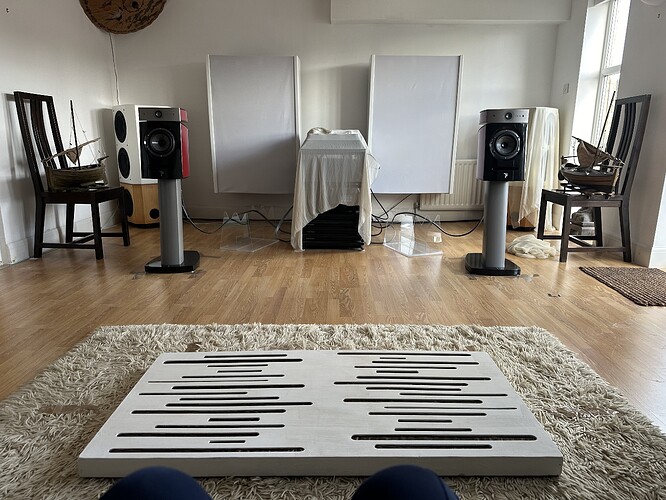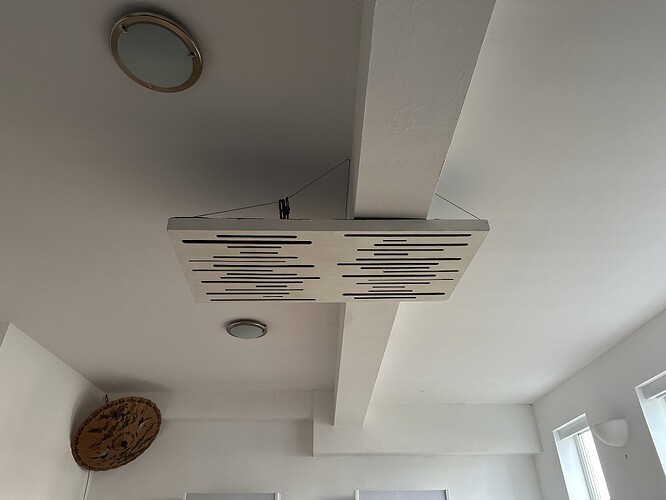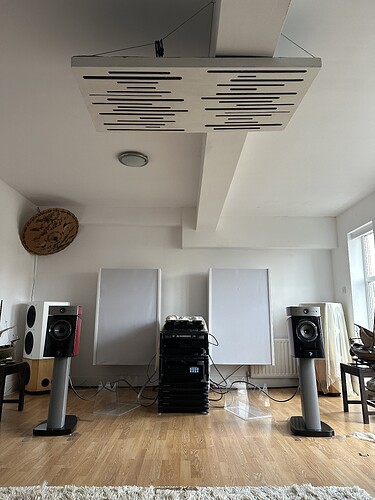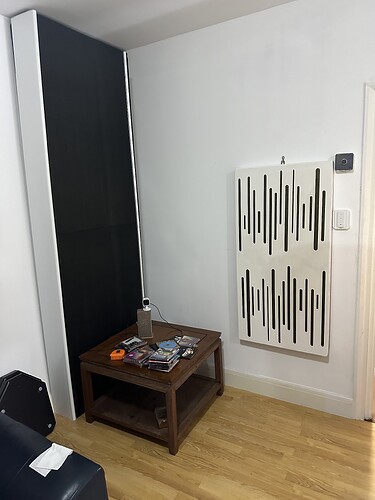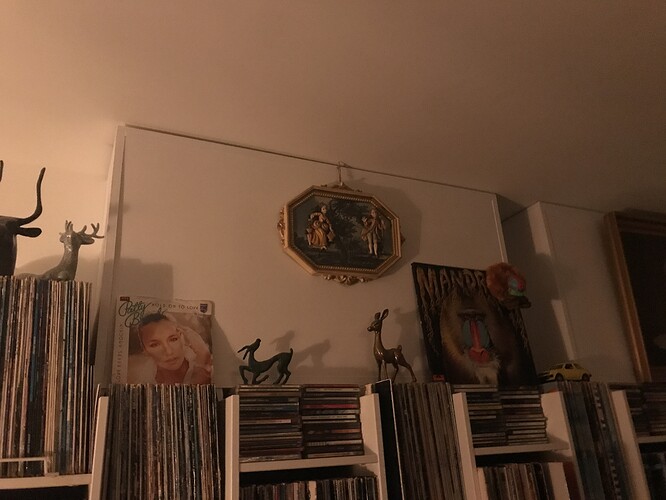Thanks to my friend’s CNC router, we converted some redundant 1220x600 50mm Rockwool absorbing panels into abfusers - basically by cutting slots into the 5mm back panels
Additionally, I created a ‘problem’ bass issue with a firmware update to my SOtM streamer; it sounded much better, bar some boom around 30hz +/-
Surprisingly, Adding two abfusers to the walls either side of my seat fixed most of the bass issue - I’d thought that I’d probably need to move my seat and/or the speakers
I then tried the third panel on the floor, between the speakers and (using a long mirror) central to the tweeters’ line of first reflection. This was beneficial, but things improved significantly as I slid the panel away from me towards the speakers
Proof of concept done, I mounted the panel on the ceiling…
Excellent result. I hadn’t realised how noisy the ceiling actually is; the initial impression is one of feeling a bit squashed down, but as your ear adjusts, it opens up the soundstage and instrument separation
Since the ceiling is generally the largest uninterrupted surface in many rooms, it makes sense to break it up, I’ve found
